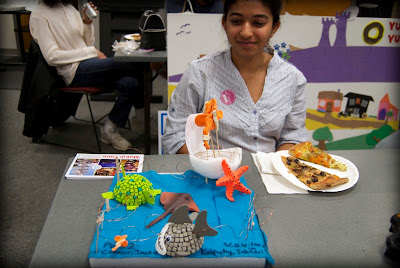"The handlebar was kind of touching the machine. They appeared to be looking at each other...The spark was there between the wheels."~Laura & Jaime, casa peSeta
Is there a need for this device? The treadle sewing machine is already human powered. Splitting the work between two people requires communication and coordination, and even has the potential to be dangerous. Moreover, unless sewing machines are used differently in Spain, she is running her machine from the back instead of the front. (This may be for photographic ease.) The entire sewing process is slowed down.
Watch the video, though, and there's a charming story here.
Sometimes the things we make may seem foolish to others. They may make no inherent sense to anyone but those involved. Laura and Jaime understood that the bicycle wanted to be with the sewing machine, and that is reason enough to make it happen.






























